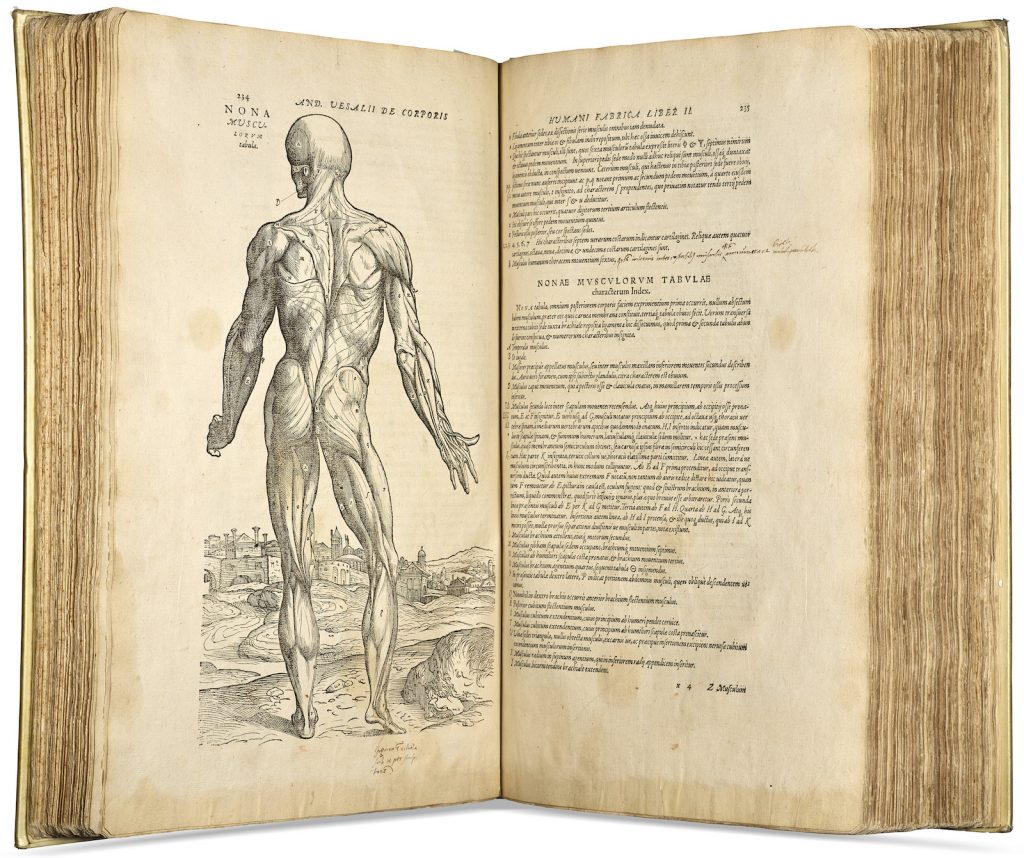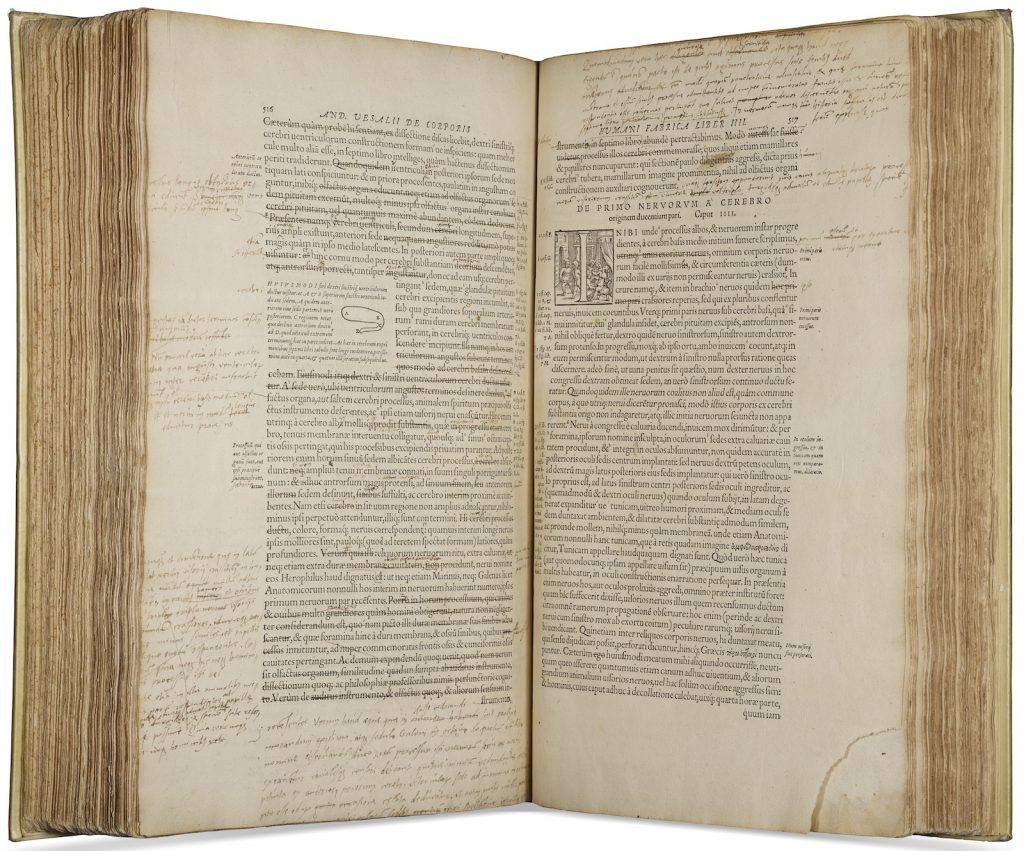Auctions
A $14,000 Renaissance Anatomy Book Fetches $2.2 Million at Auction
This copy of the second edition of the classic Vesalius text bears his annotations toward a never-realized third edition.

This copy of the second edition of the classic Vesalius text bears his annotations toward a never-realized third edition.

Artnet News

A rare second edition of a classic textbook on the human form by the Renaissance anatomist Andreas Vesalius recently soared past its $1.2 million high estimate to sell for $2.2 million in an online sale of books and manuscripts at Christie’s. A retired Canadian doctor had bought the book at auction for just $14,000 in 2007.
The book, titled De humani corporis fabrica libri septem, or On the Fabric of the Human Body in Seven Books, which the auction house calls “the greatest anatomical atlas of the Renaissance and a masterpiece of medical science, pedagogy, and typographical design” was printed in 1555. It sold to the Flemish Community, Department of Culture, together with the university KU Leuven. It so happens that the author was educated at the very same university.
The second edition expanded by almost 160 pages the first edition, printed in 1543. Not content to rest on his laurels, Vesalius made corrections to the first edition, incorporated new information from dissections of cadavers, and answered criticisms of the first edition.

Andreas Vesalius, De humani corporis fabrica libri septem, second edition, 1555. Courtesy Christie’s.
This copy is heavily marked up by the author with notes toward a third edition, which was never realized. Vesalius’s influential book was a response to physician-philospher Galen of Pergamon, whose theories had reigned supreme since his death in 216. From experience disecting cadavers, Vesalius was able to identify errors in Galen’s text, which he corrected with gusto in his own volume.
Vesalius oversaw every aspect of the book’s design, including layouts, illustrations, and typography. Of special note are the “muscle men,” 14 depictions of the human form in woodcut that reveal the musculature, which are highly recognizable and were often reminiscent of poses from Renaissance paintings, as the house notes in an essay. The identity of the artist remains the subject of some debate.
“Although Vesalius urged the investigation of the human through the direct observation of dissection,” says Rhiannon Knol, a specialist in Christie’s books and manuscripts department, “it wasn’t practical for every physician to be able to perform dissections on human bodies, so this book was often used in place of dissection.”